
Giovanni Benedetto Castiglione was an Italian Baroque painter, printmaker and draftsman, of the Genoese school. He is best known now for his etchings, and as the inventor of the printmaking technique of monotyping. He was known as Il Grechetto in Italy and in France as Le Benédette.

Giovanni Lanfranco was an Italian painter of the Baroque period.

The Accademia di San Luca is an Italian academy of artists in Rome. The establishment of the Accademia de i Pittori e Scultori di Roma was approved by papal brief in 1577, and in 1593 Federico Zuccari became its first principe or director; the statutes were ratified in 1607. Other founders included Girolamo Muziano and Pietro Olivieri. The Academy was named for Luke the Evangelist, the patron saint of painters.
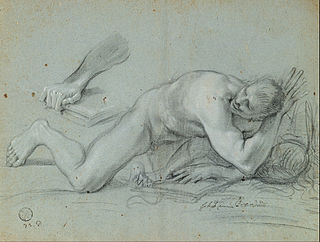
Giovanni Angelo Canini (1609–1666) was an Italian painter and engraver of the Baroque period.

San Martino ai Monti, officially known as Santi Silvestro e Martino ai Monti, is a minor basilica in Rome, Italy, in the Rione Monti neighbourhood. It is located near the edge of the Parco del Colle Oppio, near the corner of Via Equizia and Viale del Monte Oppio, about five to six blocks south of Santa Maria Maggiore.

Viviano Codazzi was an Italian architectural painter who was active during the Baroque period. He is known for his architectural paintings, capricci, compositions with ruins, and some vedute. He worked in Naples and Rome. He is known in older sources as Viviano Codagora or il Codagora.

San Francesco da Paola ai Monti is an 18th-century titular church in Rome. It is dedicated to St Francis of Paola, and is located in the Monti rione.

Domenico Gargiulo called Micco Spadaro was an Italian painter of the Baroque period, mainly active in Naples and known for his landscapes, genre scenes, and history paintings.
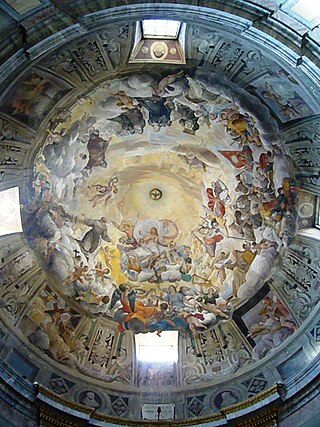
Bernardino Gagliardi was an Italian Baroque painter, generally producing frescos for churches. He joined the Academy of St Luke, becoming its president in 1655.

Giovanni Andrea de Ferrari (1598–1669) was an Italian painter of the Baroque period, active mainly in Genoa. A prolific easel painter who created many altarpieces, he was, together with Gioacchino Assereto and Orazio de Ferrari, one of the chief influences on the later development of the Baroque in Genoa.
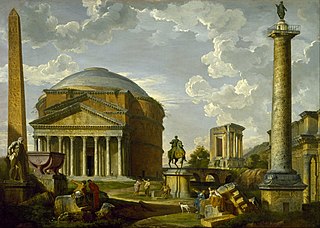
In painting, a capriccio means an architectural fantasy, placing together buildings, archaeological ruins and other architectural elements in fictional and often fantastical combinations. These paintings may also include staffage (figures). Capriccio falls under the more general term of landscape painting. This style of painting was introduced in the Renaissance and continued into the Baroque.

Italian Baroque art is a term that is used here to refer to Italian painting and sculpture in the Baroque manner executed over a period that extended from the late sixteenth to the mid eighteenth centuries. Italian Baroque architecture is not covered.

Fabrizio Chiari (c.1615–1695) was an Italian painter and engraver who spent his entire life in Rome.

Gennaro Greco also known as "Il Mascacotta" (1663–1714) was an Italian architectural painter who was active in Naples during the late Baroque period. He is known for his architectural paintings, capricci, compositions with ruins, as well as his vedute. His vedute fall mostly in the category of the so-called vedute ideate which represent closely observed views of completely imaginary landscapes.
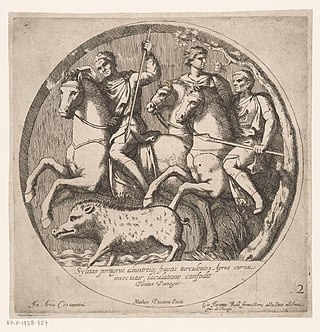
Matteo Piccione was an Italian painter, active in Rome, as a painter of religious subjects. He was born in Ancona. He is noted by Lanzi to be a collaborator with Giovanni Antonio Galli He was an academic in the Accademia di San Luca in 1655. One of his paintings is in San Martino ai Monti, Rome. Mariette's catalogue lists paintings in the style of Veronese and Cesi.
Girolamo Massei was an Italian Mannerist painter active mostly in Rome.

Alessandro Salucci was an Italian painter who played an important role in the development of the genre of cityscapes (vedute) of Rome. He created capricci, i.e. imaginary architectural perspectives and harbour views, in which the figures were often executed by another artist.

Niccolò Codazzi was an Italian painter of architectural paintings, capricci and vedute. He also created decorative elements in frescos as a painter of 'quadratura'. A son of the prominent architectural painter Viviano Codazzi, he trained with his father and was active in Rome, Paris and Genoa.
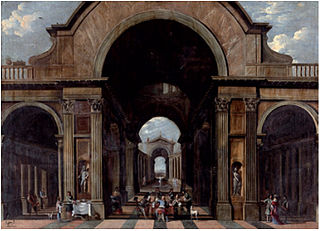
Vicente Giner was a Spanish canon and painter of architectural paintings, capricci and vedute, who was active in Rome. He was a frequent collaborator of the prominent architectural painter Viviano Codazzi in Rome.
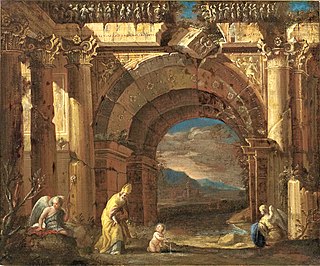
Ascanio Luciano or Ascanio Luciani was an Italian architectural painter who was active during the Baroque period. He is known for his architectural paintings, capricci, compositions with figures among ruins, and some vedute. He worked in Naples throughout his career. He is regarded as playing an important a hinge role in the genre of architectural capricci between leading founders of the genre such as Viviano Codazzi and François de Nomé and the 18th-century specialists of the genre.



















